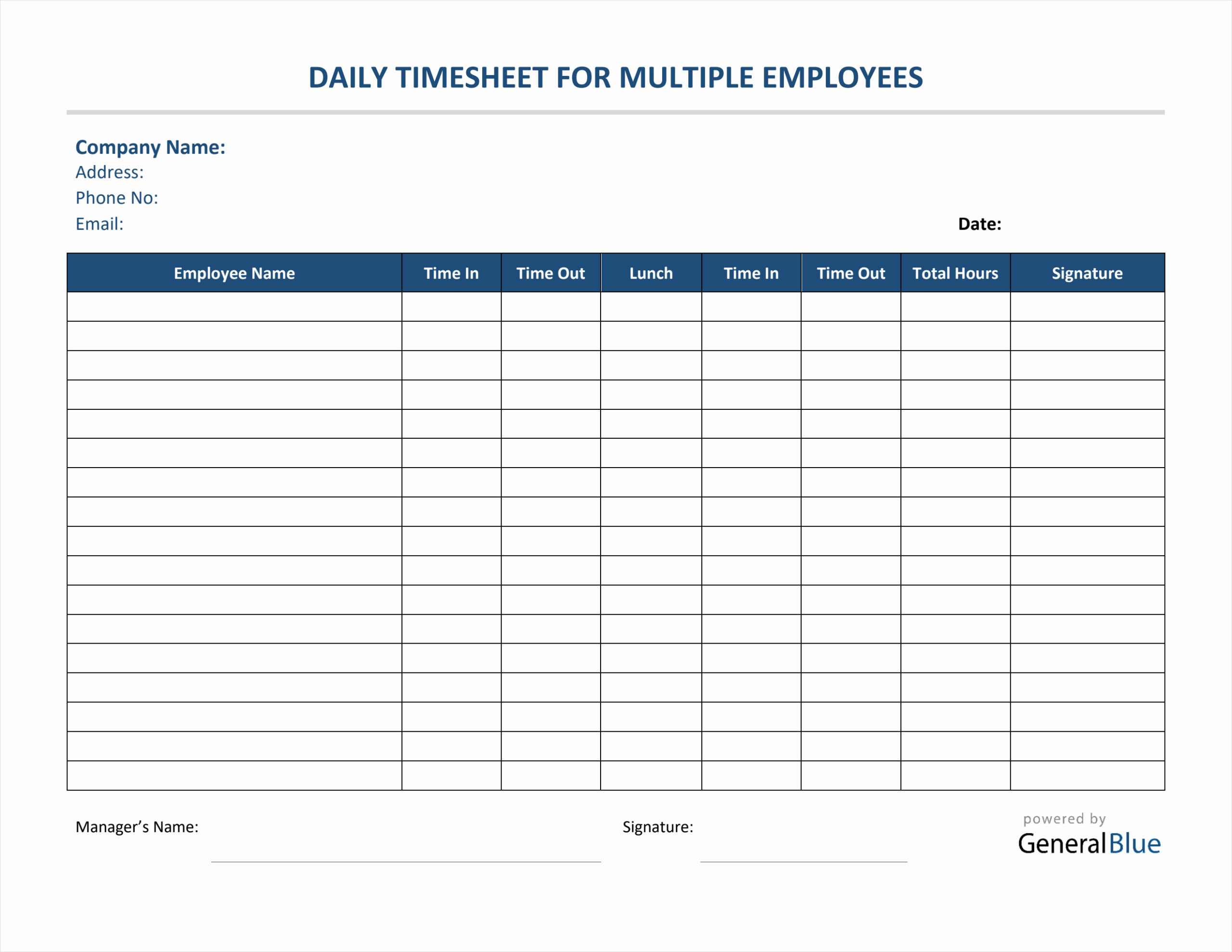Do you often find yourself struggling to keep track of your employees’ work hours? Are you tired of the constant back-and-forth emails and confusion over who worked when? If so, it’s time to consider implementing a daily employee timesheet. This simple tool can revolutionize your business by providing an accurate record of your employees’ daily working hours, ensuring transparency and accountability.
What is a Daily Employee Timesheet?
A daily employee timesheet is a document used by businesses to track the hours worked by their employees daily. It typically includes columns for the date, employee name, start and end times, and break durations. By recording this information, employers can calculate the total number of hours worked by each employee and ensure they are compensated accurately.
Why do you need a Daily Employee Timesheet?
Implementing a daily employee timesheet offers numerous benefits for both employers and employees:
- Accurate Record Keeping: A timesheet provides a detailed record of an employee’s work hours, ensuring that all hours are accounted for and accurately compensated.
- Transparency: Timesheets promote transparency within the organization by allowing employees to track their hours and ensuring they are being paid fairly for their work.
- Efficiency: With a timesheet, you can easily calculate the total hours worked by each employee and generate accurate payroll reports, saving time and reducing errors.
- Compliance: Many labor laws require employers to keep records of employees’ work hours. By using a timesheet, you can ensure compliance with these regulations.
When should you use a Daily Employee Timesheet?
A daily employee timesheet should be used whenever you have employees working on an hourly basis. Whether you have full-time, part-time, or temporary employees, a timesheet allows you to accurately track their working hours and ensure they are compensated correctly.
Timesheets are particularly useful for businesses with remote or flexible work arrangements. With employees working from different locations or setting their own schedules, it can be challenging to keep track of their hours without a centralized system like a timesheet.
What to include in a Daily Employee Timesheet?
When creating a daily employee timesheet, there are several key elements that you should include:
- Date: Each timesheet should have a column or section for the date, allowing you to track the hours worked on specific days.
- Employee Information: Include a space for employees to enter their names or employee IDs to ensure accurate record keeping.
- Start and End Times: Have separate columns for employees to enter the time they start and end their work shifts.
- Break Duration: If your employees are entitled to breaks, provide a space for them to record the duration of their breaks.
- Total Hours: Include a section to calculate the total number of hours worked by each employee.
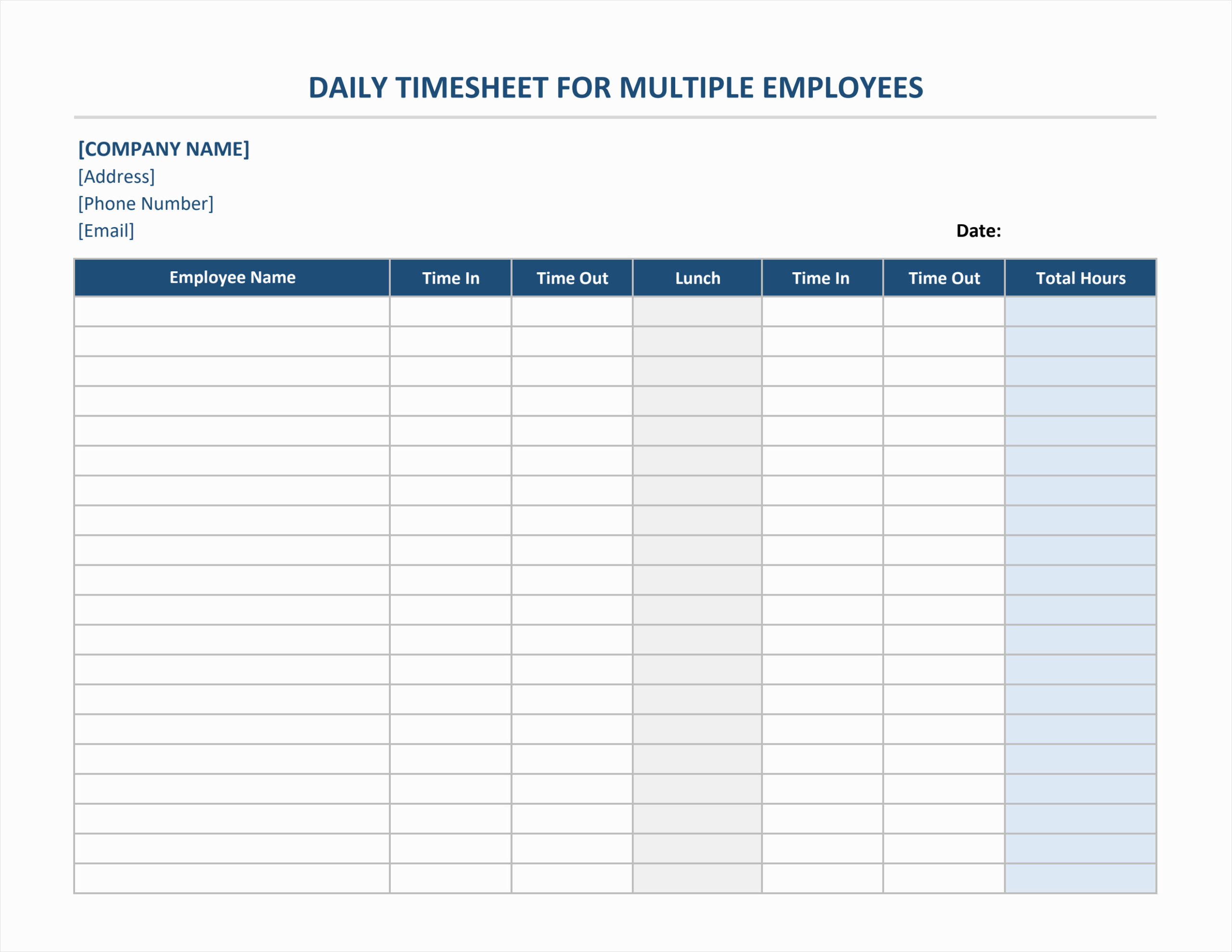
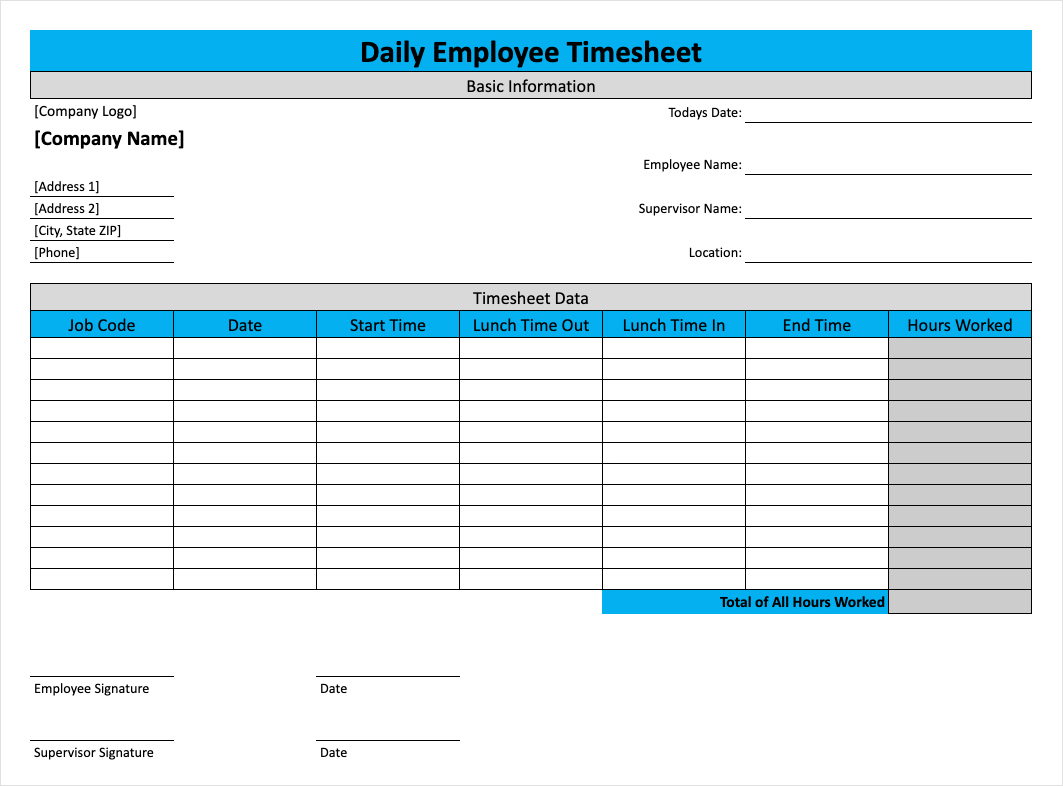
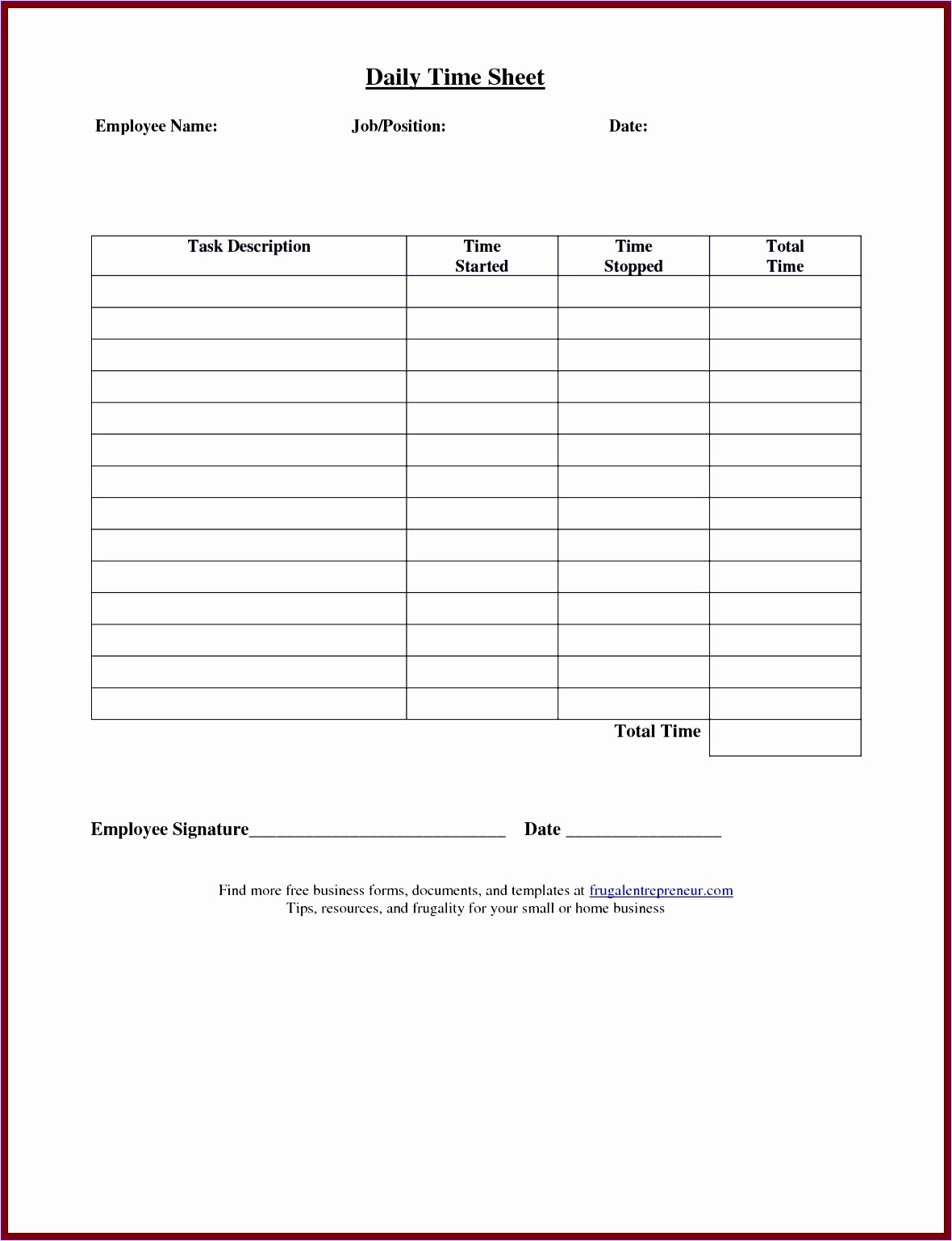
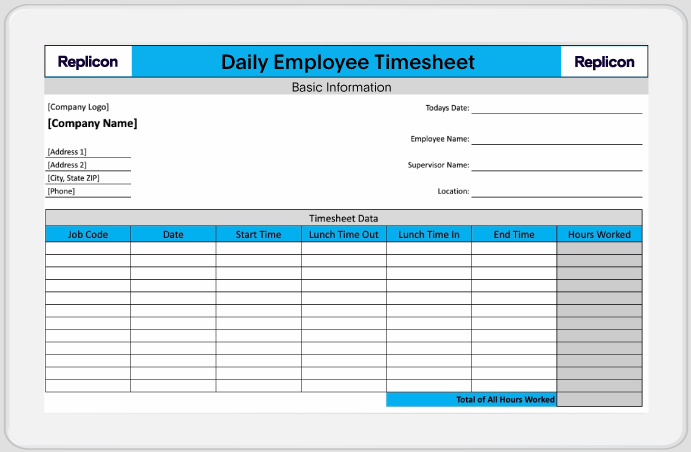
How to write a Daily Employee Timesheet?
Writing a daily employee timesheet is a straightforward process. Here are some steps to follow:
- Create a Template: Design a simple timesheet template using spreadsheet software or an online timesheet tool. Include all the necessary columns mentioned above.
- Distribute the Timesheets: Provide each employee with a copy of the timesheet template and explain how to correctly fill it out.
- Remind Employees: Set reminders for employees to complete their timesheets daily or at the end of each work shift.
- Review and Approve: As the employer or manager, review the completed timesheets for accuracy and approve them before processing payroll.
Mistakes to avoid with Daily Employee Timesheets
While daily employee timesheets are a valuable tool, there are some common mistakes that you should avoid:
- Incomplete or Inaccurate Entries: Remind employees to fill out their timesheets accurately and completely, ensuring they record all their work hours and breaks.
- Delayed Submissions: Encourage employees to submit their timesheets promptly to avoid delays in processing payroll.
- Not Providing Clear Instructions: Make sure employees understand how to fill out the timesheets correctly by providing clear instructions and examples.
- Misplacing or Losing Timesheets: Implement a system to ensure timesheets are securely stored and easily accessible when needed.
- Failure to Review: Take the time to review and verify the accuracy of the timesheets before approving them for payroll processing.
In conclusion, implementing a daily employee timesheet is an essential step for any business that wants to accurately track employee work hours, ensure fair compensation, and maintain compliance with labor laws. By using a timesheet, you can streamline your payroll process, promote transparency, and avoid common mistakes associated with manual record-keeping. Start using a daily employee timesheet today and experience the benefits it brings to your organization.
Daily Employee Timesheet Template Word – Download
